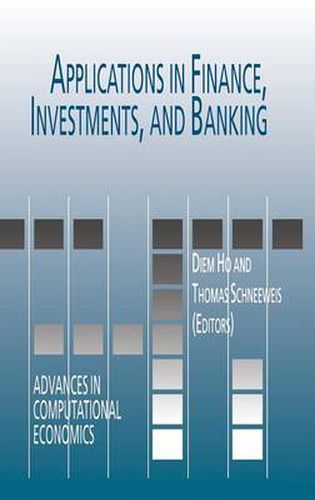Readings Newsletter
Become a Readings Member to make your shopping experience even easier.
Sign in or sign up for free!
You’re not far away from qualifying for FREE standard shipping within Australia
You’ve qualified for FREE standard shipping within Australia
The cart is loading…






This title is printed to order. This book may have been self-published. If so, we cannot guarantee the quality of the content. In the main most books will have gone through the editing process however some may not. We therefore suggest that you be aware of this before ordering this book. If in doubt check either the author or publisher’s details as we are unable to accept any returns unless they are faulty. Please contact us if you have any questions.
Technological, economic, and regulatory changes are some of the driving forces in the modern world of finance. For instance, financial markets now trade 24 hours a day and securities are increasingly being traded via real-time computer-based systems in contrast to trading floor-based systems. Equally important, new security forms and pricing models are coming into existence in response to changes in domestic and international regulatory action. Accounting and risk management systems now enable financial and investment firms to manage risk more efficiently while meeting regulatory concerns. The challenge for academics and practitioners alike is how to keep themselves, and others, current with these changing markets, as well as the technology and current investment and risk management tools. This text offers presentations by 12 investment professionals and academics on a range of finance, investment and banking issues. Chapters include analysis of the basic foundations of financial analysis, as well as current approaches to managing risk. Presentations also include reviews of the means of measuring the volatility of the underlying return process and how investment performance measurement can be used to better understand the benefits of active management. Finally, articles also present advances in the pricing of the new financial assets (e.g., swaps), as well as the understanding of the factors (e.g., earnings estimates) affecting pricing of the traditional assets (e.g., stocks). This book provides information of both traditional and modern approaches to financial and investment management.
$9.00 standard shipping within Australia
FREE standard shipping within Australia for orders over $100.00
Express & International shipping calculated at checkout
This title is printed to order. This book may have been self-published. If so, we cannot guarantee the quality of the content. In the main most books will have gone through the editing process however some may not. We therefore suggest that you be aware of this before ordering this book. If in doubt check either the author or publisher’s details as we are unable to accept any returns unless they are faulty. Please contact us if you have any questions.
Technological, economic, and regulatory changes are some of the driving forces in the modern world of finance. For instance, financial markets now trade 24 hours a day and securities are increasingly being traded via real-time computer-based systems in contrast to trading floor-based systems. Equally important, new security forms and pricing models are coming into existence in response to changes in domestic and international regulatory action. Accounting and risk management systems now enable financial and investment firms to manage risk more efficiently while meeting regulatory concerns. The challenge for academics and practitioners alike is how to keep themselves, and others, current with these changing markets, as well as the technology and current investment and risk management tools. This text offers presentations by 12 investment professionals and academics on a range of finance, investment and banking issues. Chapters include analysis of the basic foundations of financial analysis, as well as current approaches to managing risk. Presentations also include reviews of the means of measuring the volatility of the underlying return process and how investment performance measurement can be used to better understand the benefits of active management. Finally, articles also present advances in the pricing of the new financial assets (e.g., swaps), as well as the understanding of the factors (e.g., earnings estimates) affecting pricing of the traditional assets (e.g., stocks). This book provides information of both traditional and modern approaches to financial and investment management.